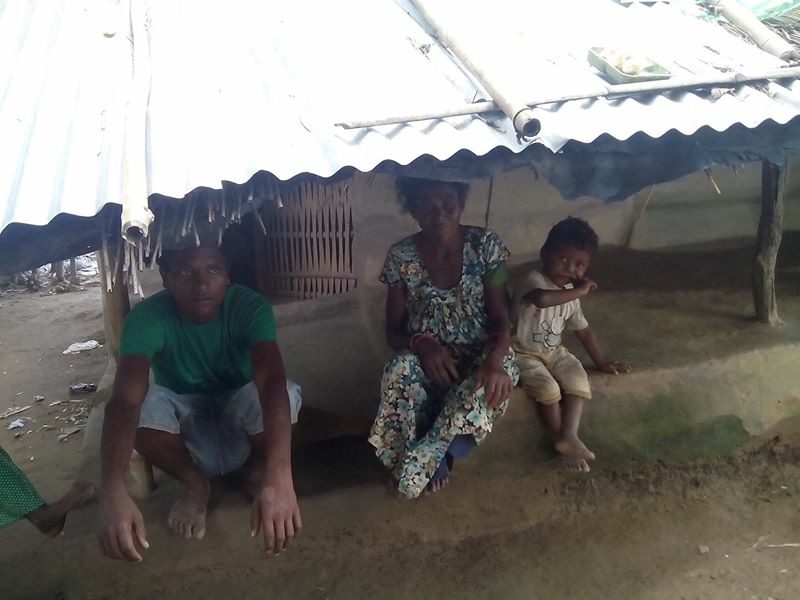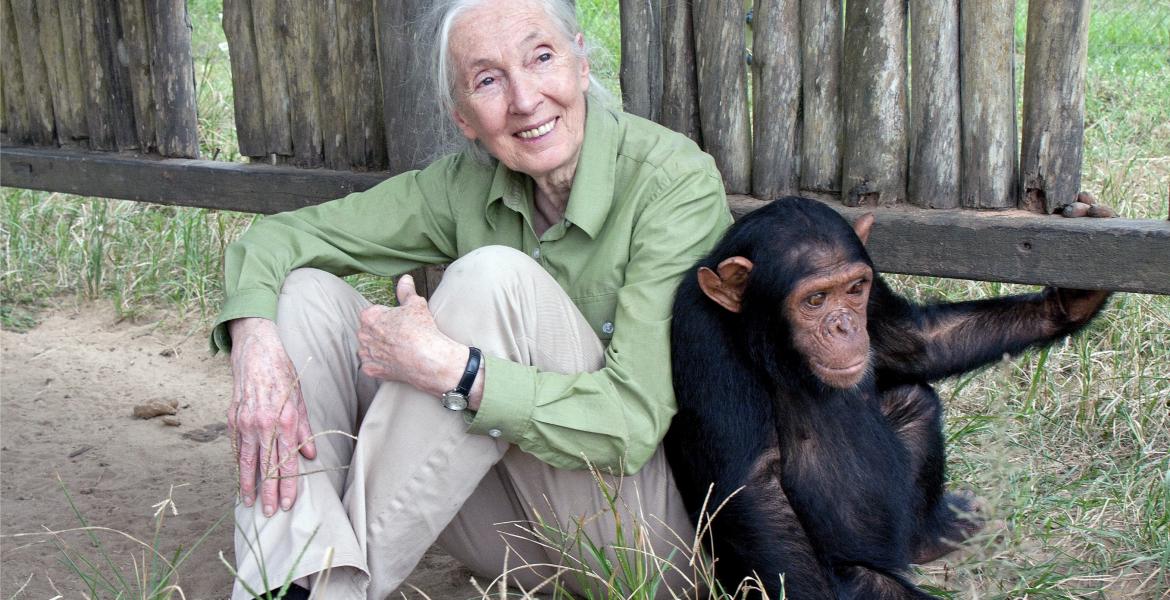Two boys and a handful of friends huddled under a tarp in the pouring rain, live video imagery of their sole source of shelter and the destruction of a major earthquake being beamed back to a retired man in Texas via Skype on a borrowed cell phone.
It was April, and the once tall city of Kathmandu lie in large and broken heaps just east of the center of Nepal.
Terry Mikeska had seen the city online before, but in the two and half years he’d known the two boys and their family, he’d never seen them in a position like this, and the news of the devastation was coming through in color.
In the fall of 2013, Mikeska, an affluent San Angelo oilman with a hand for all things entrepreneurial, found himself looking at the face of his refrigerator. The box had been covered from top to bottom with travel magnets—trinkets collected over years of excursions that meant little more than a reminder of how lonely he was since one of the city’s most generous matriarchs, Eva Tucker, had died.
Mikeska had been Tucker’s caretaker for 23 years and revered the woman greatly. He saw to it that the money she left in a namesake foundation was put to good use and had always clung to one of her quotes, “do the most good for the most people in your life”.
Staring at the refrigerator doors with all their colored magnetry stuck on top, the 49-year-old began to take mental inventory of his material wealth.
“This is just ridiculous,” he said, naming off a list of possessions and services. “I’m ready to downsize my life.”
Prepared to take scissors to some of the extravagance and seeking a place where he could do good, Mikeska contemplated infomercials on international missions and support agencies for third-world countries. He didn’t want to help uninformed, so he began to consider his options and recalled hearing stories of Bangladesh from a local newspaper contributor that spurred an idea.
“You can send a bunch of money on TV, but you don’t know where it goes. You don’t know how much goes to the people, how much goes to the administration,” he pointed out. “I said, ‘you know, maybe I’ll just adopt me a family.’ I just kind of thought, ‘I wonder where it’s needed.’”

“They lived in a little village and their grandfather was a priest,” Mikeska recalled. “One October—they do their annual celebration every October and just celebrate life—they blessed me on Skype. I went through a little ceremony with them and I thought, ‘man, this is just—how cool.’”
The family, despite their humble three-bedroom hut and limited material means, did have an old desktop computer and the internet, so they were able to remain in contact with the oilman from America regularly over the next couple of years.
When the boys, ages 18 and 21, began going to school in Kathmandu, Terry followed online, remaining in regular contact and getting to know the family well via Skype and Facebook. One of the boys had already graduated high school and was attending a sort of college to become a CPA, while the other hoped to finish high school and go into hotel hospitality. Their father, Terry said, runs a tiny shop back in Birtamode, selling utensils, shoes and other wares to the locals, while the grandparents work the rice fields and milk the cow.
The unlikely pairing soon became friends: Mikeska interested in learning all he could about their culture through them, while the family got to know the United States through the video frames on their computer.
“I just kind of was living life with them for a couple of years [over the internet],” Mikeska said. “And then the earthquake hit. And when the earthquake hit it was heart throbbing. I couldn’t get a hold of them for days. I was just panicked. I knew I couldn’t get there…”
The Day the Earth Shook
Some five days after the earthquake hit on April 25, 2015, the boys were finally able to contact Terry via Skype and he witnessed for himself the devastation the natural disaster had left in the background.
“I saw the devastating pictures outside, where they were living under a tarp with several other people,” Mikeska said. “And it was pouring down rain. And they had no fresh water, they had no food, and even little tremors were happening as we spoke and I could hear people hollering in the background.”
While Mikeska was “living through” the Gorkha earthquake near Kathmandu with his friends online, stories of heartache, destruction and desperation flooded the news. He remembers seeing them there with nothing and not being able to help: All of the money wiring services were down, banks had been reduced to rubble, and airports were either closed, collapsed or both.
An estimated 9,000 people were killed in the massive quake, including a party of 19 buried in a snow-and-ice avalanche at the base camp of Mt. Everest. Aftershocks and subsequent earthquakes raised the death toll and the displaced to hundreds of thousands whose homes and belongings had been razed to the ground as the earth shook.
“They started burning bodies,” Mikeska said. “I saw that on Skype. They showed me and they said, ‘Teddy’—that’s what they call me—they said, ‘Teddy, there’s too many bodies and we’re trying to get masks to wear. The government decided it’s going to be very dangerous with disease so they’re going to take DNA tests of the bodies and try and figure out who is who later’. It just came very devastating.”
Finally, some relief from China came in, and the Nepalese received bottled water and crackers, basic provisions divided up among the estimated nine million-plus people affected by the natural disaster.
After about two weeks, Mikeska said, things began coming back online, and the boys made plans to return their home in Birtamode, which lay some 14 hours to the east by bus. When Xujn and his brother arrived at the transportation department, however, the bus drivers had been overcome with greed and were scamming travelers with tickets priced in excess of $100 USD, a price not many could afford to pay.
“These kids couldn’t afford it,” Mikeska said. “What happened is the government had to step in. It was just a scam. They were scamming these people for all they had.”
Terry wired the two boys a couple hundred dollars to help them out with provisions, and each acquired a free travel voucher from the government to get them home to their family. With the buzz of relief planes still heard in the background, another quake hit near Bangladesh, close to the family’s home.
Mikeska said that the second quake, while not as powerful as the first, had again shaken the country and put him out of touch with his friends in Nepal. When he was finally able to speak to them again, he learned that their house had sustained some damage and cracks and that several people in their town had lost most, if not all, of their belongings.
“I said, ‘how can I help?’ and they never tried to take advantage,” Mikeska said. “That’s the thing, you know. That’s why I knew they were so real, because after all those years, they never asked me for nothing. They just enjoyed talking, hearing my voice, seeing pictures of our nature, of me with my dog. I would go on Skype and go to the grocery store and talk to friends. Their dream is to try to get a job in the United States; it’s just their dream.”

After the boys sent the pictures back, the desperateness of their situation sunk in. Small huts formed of mud and straw served as homes for many of the villagers, some leveled when the earth shook. Those would be easy to repair, Mikeska determined, so he asked the brothers to think of what the people needed most and to let him know.
“Immediately, they said, ‘well, we already know. We all know in the village what they need. They’re just expensive.’” Mikeska pressed and the boys responded, “’They need a rice pot.’ They said, ‘You see, Teddy, when the ceiling collapsed and they made it out of their little huts, it collapsed everything. So it mashed their rice pot, it broke their dishes, it broke everything.’”
The boys explained to Terry that in the absence of proper cooking vessels and utensils, the village people had taken to scavenging through the trash to try and find empty cans they could set on rocks in fires on the ground, where they would cook their rice.

This year, the celebration will be bigger than ever because the people are so grateful to still be alive after the earthquakes, and Mikeska will be flying over to join them. But, countless refrigerator magnets later, he won’t be going empty handed.
“You know, I travel for fun every month,” he said. “Forget the fun travel, I want to start doing something more. Let me make a difference in somebody’s life.”
The Rice Pots
In Nepal, one large factory pumps out rice pots for the entire country, a factory miraculously still running in Kathmandu. After learning about its existence, Terry had the two boys call that factory and enquire about pricing and large-quantity orders. The boys were sent to count all of the people in town and estimate how many were without a rice pot.
After two days, the boys returned with an estimate of approximately 105 people using cans to cook out of and news from the factory, who promised to deliver if an order of that size was placed for their highest quality, five-quart, aluminum pots. Apprehensive about quoting the numbers, Mikeska said the boys told him it would be “very expensive,” then offered an estimation of $16 USD per pot.
“I said, ‘ok, does that include a lid? What else do these people use?’” Mikeska recalled. “They said, ‘well they share plates.’”

Again, the boys were sent to gather information on the cost, and returned a price of roughly 90 cents per plate and another 30 cents per spoon.
“Realize that all of this costs a lot of money to them, and that’s just too much money and they can’t even fathom that kind of money,” Mikeska said. “So we’re up to like $18 now to buy a rice pot and maybe three plates and maybe some spoons. So I said, ‘look, can you find out about the rice factory?’”
There is a rice factory in Birtamode, where the family goes to harvest their own rice and separate the grains from the hulls. The family goes regularly to work their own harvest, sparing the hulls for their cow, which provides fresh milk each morning, and eating the rice at every meal.
On one of the visits, the boys requested information on acquiring 110 10-pound bags, which was estimated to run $2.80 apiece. Adding up the sum per family, Mikeska guessed he was at approximately $21 per family including the rice pot, a few plates and a couple of spoons. He enquired about renting a truck for transport and got the boys to ask their friends to help him move and deliver the products to the families.
“That’s kind of how it all started,” he said. “After I started adding up everything together and trying to get it together, I thought, ‘ok, I want to buy a few little things for the children’. They have some books there, some colors, some crayons, that’s only a couple of bucks. It’s really cheap. Once I added it all up, it came out to about $26 for each family.”
With Terry’s friends working on arranging the orders, deliveries and plans for dissemination, he began thinking of other ways he could help and again asked for ideas. By now he’d taken news of his intentions to the internet and word and support were spreading through social media both in Nepal and back stateside.
The Children in the Mud
The Birtamode library is a place where the villagers gather to read and study, many hopeful that one day they'll be afforded the opportunity to go off to school in Kathmandu. In the earthquake, Birtamode’s library building sustained several cracks and many of the books were “very much damaged," Xujn and his brother reported, a travesty because the building is "all we have" aside from homes and little shops and fields.
Again, Terry tasked the two with the job of finding out how much repair work would cost, and when the boys returned with an estimate, the number was again fretfully high at $1,200 USD.
“I said we have new library that was rebuilt here in our town too, we call it downtown area,” Mikeska recalled in simple English. “But you couldn’t imagine what it cost to rebuild our library, because it was $17 million USD. They had to try to figure that and they’ve never seen a figure that much in their life. They just couldn’t even fathom $17 million. All they wanted is their cracks filled and a new roof put on.”
As he collected figures and began to organize ideas, Terry Mikeska registered his trip with the US Embassy and began to post about his plans on their Facebook wall. Soon, he received a welcome from a Nepalese couple, who wanted to invite him to their church.
Terry received another round of pictures from the minister and his wife, responding again with a question on how he could help. The couple was evasive, but told Mikeska that they were operating their own mission to save the children who had been orphaned by the earthquake.

“’We have the children that you see that they pulled out of the mud on TV,’” Mikeska quoted the minister. “’We have the children nobody wanted. We have the children that y’all call an orphanage that we have in a building here, and we all volunteer to take care of these children.’”
The children range in age from a few months old to 12 years, and more and more are coming in. Currently, the minister and the church are caring for approximately 80 boys and girls, serving them one cup of rice per day because they can’t afford to purchase more.
While adoptions are their greatest need, the church also desperately needs rice and clothing to feed the children and keep them clean and dressed. Calling his attention to the pictures of the orphans, the minister told Mikeska that the reason they look so dirty is because they hadn’t changed since the earthquake. Their clothes are all they have and they can’t afford to buy more.
Terry enquired about whether there was something similar to a Goodwill in Kathmandu and learned that in such a store two to three articles of clothing ran approximately $1 USD. The minister was adamant, however, that while clothing would be nice, every dollar could feed a child for two weeks, a much more dire need than a change of clothes.
The minister told Terry, “Really, prayers are our first need, adoptions is our second, rice is our third and clothing is a luxury.” Not able to adopt all of the children himself, Mikeska vowed to help with the remaining items, adding English Bibles and paper for a school in a nearby village to the list.
The school has approximately 60 students and reaching it will be the biggest difficulty, requiring the rental of a truck and a long hike to get to the schoolhouse in a valley.
“I kept thinking, ‘I’m not even at $5,000 yet. I’m going to do a lot of this just myself,’” Mikeska said. “I’m going to fulfill all four; I’m determined and I’m going to do it."
Terry Mikeska has been planning the trip to Nepal for several weeks and intends to live like the locals while he's there. He'll be taken to the rice factory to harvest and work the grain; he'll attend the local church and take part in the annual celebration; and he'll work with Xujun, his host family and their friends to acquire and distribute all of the goods he's selected for his mission.
For three weeks he intends to pass out rice, pots, plates and spoons in Birtamode, provide rice and clothing to the orphanage, rebuild the library and bringing the schoolchildren notebook paper. Meanwhile, the people in Nepal remained humble and told him he was doing too much, grateful and in awe of the relief and generosity.
Not reliant on any administration or staff to assist, the money Mikeska has allocated to the mission will flow directly to the people who need it, a sizeable sum of which has been supplied by the citizens of San Angelo, who expressed interest in helping as word spread online of Terry's mission. So far, $2,900 has been raised on Mikeska's "Fill the Rice Pot" Give Forward site, and donations are still being accepted at Papel stationary at 1913 Knickerbocker Road. Terry is also taking checks made out to Mikeska, Inc. with Nepal in the memo line via direct mail at his home address. These options will remain open until Mikeska leaves for Nepal in the third week of October.
“This is what I really want to do with my life,” he said. “It was meant to be. It has been my calling.”
Subscribe to the LIVE! Daily
Required






Post a comment to this article here: